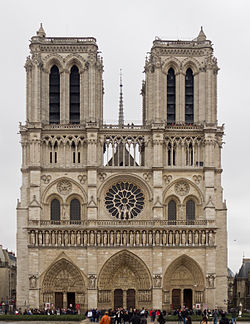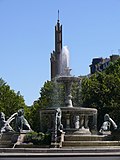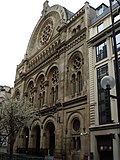This is a list of religious buildings in Paris, organized by religion and then by arrondissement (administrative division or district).
Contents
- Buddhism
- Christianity
- Anglican Communion
- Antoinism
- Armenian Apostolic Church
- Armenian Catholic Church
- Catholic Church
- Christian Science
- The Church of Jesus Christ of Latter-day Saints
- Eastern Orthodox Church
- Evangelical Lutheran Church
- New Apostolic Church
- Reformed churches
- Salvation Army
- Seventh-day Adventist Church
- Ukrainian Catholic Church
- United and uniting churches
- Hinduism
- Islam
- Judaism
- See also
- References
- External links




































